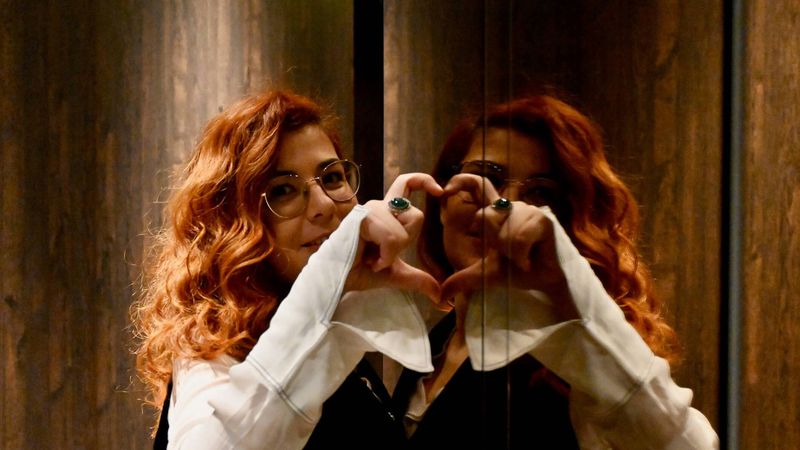Do you know that raw ache in the pit of your stomach when someone pulls away, or the relief when a text finally comes through? That isn’t random. It’s not just bad luck or your inability to love “right.”
It’s your attachment style whispering—or screaming—the rules of love you learned before you even knew what "amore" was. Allow me to cut through the noise.
If you’ve ever asked yourself why you keep ending up in the same relationship mess, or why closeness feels like too much (or never enough), you’re not broken. There’s a pattern. And you can change it. This is everything I wish someone had mapped out for me years ago.
1. You Don’t Pick Your Love Style—It Picks You
Do you ever wonder why your heart races when someone texts back late? Most of us never chose our love style. It was written quietly, years ago, by how people treated us before we had words for it.
Picture this: you’re seven, waiting for a parent to notice you or calm you down after a nightmare. That moment—when someone showed up for you, or didn’t—left its mark. That’s where your “attachment template” got set.
It’s not about blaming anyone. It’s about understanding that your blueprint for love is old, but it doesn’t have to be permanent. You can update it. But first, you need to see the old script for what it is.
2. Secure Attachment: The “Let’s Talk About It” Type
If you ever felt safe to speak your mind and ask for what you needed, you might recognize this. Securely attached people don’t play games. They say what they mean, and actually trust that they’ll be heard.
When conflict comes up, they lean in. Not because they love drama, but because they know arguments aren’t the end of the world. They solve problems, not start fires.
Nobody’s perfect. But when you’ve got a secure love style, you can let someone in without losing yourself. That kind of steadiness? It isn’t flashy, but it’s rare—and it’s the foundation for real, grown-up love.
3. Anxious Attachment: Living on the Edge of the Read Receipt
“Did he see my message? Why isn’t she calling back?” If you know the feeling of your stomach dropping over a read receipt, welcome to anxious attachment.
Growing up, maybe you learned that love could be pulled away any second. So now, you chase reassurance like it’s oxygen. The highs are sky-high, but the lows? Gutting.
It’s exhausting living in a cycle of waiting and hoping. If you find yourself always needing proof that you matter, you’re not needy—you’re wired for closeness that was unpredictable. Knowing this is step one. You can learn to self-soothe instead of waiting for someone else to make it okay.
4. Avoidant Attachment: The Master of Emotional Houdini
Have you ever felt the urge to run when things get too close? That’s avoidant attachment’s calling card. You crave intimacy—just not too much of it, and definitely not on someone else’s timeline.
When partners get close, you might find reasons to pull away. Work gets busy. You suddenly need more “me time.” Walls go up, fast. Not because you don’t care, but because relying on someone else feels risky.
You learned early that keeping your distance was safer than being disappointed. But those walls can get lonely. The tricky part? Letting in a little mess, and letting someone see behind the curtain, one brick at a time.
5. Disorganized Attachment: Wanting Closeness, Fearing the Crash
It’s like being stuck in a tug-of-war with yourself. You want to be close, but the second it happens, you panic. Disorganized attachment is chaos—love feels unpredictable, sometimes dangerous.
Maybe you grew up with unpredictable care, or trust got shattered. Now, you’re caught between craving connection and fearing betrayal. Some days, you reach out. Other days, you hide.
This push-pull dance isn’t your fault. It’s survival instincts on autopilot. Healing starts with noticing the pattern and giving yourself permission to want safety, even if you’re not sure how to get it yet.
6. Spotting Your Patterns: Your Love Life’s Broken Record
You know that feeling when you look back at old texts and see the same argument, different person? That’s not a coincidence. It’s your love style pressing repeat.
Take a day and map it out. Who do you chase? Who do you run from? What makes you feel safe or set off? Sometimes, the pattern is so familiar, you don’t even see it until it’s right there, staring you down in black and white.
Awareness is brutal—but it’s also freedom. If you can spot the script, you get to write the next scene. That’s how things finally change.
7. The Childhood Mirror: Family, First Loves, and Old Hurts
Ever notice your partner’s quirks feel suspiciously familiar? Our first blueprint for love came from home—good, bad, or messy. Even your arguments might echo old family routines.
Think of your childhood like a rehearsal. Every hug, every cold shoulder, every slammed door—your nervous system logged it all. These moments shaped how much love feels safe, or how fast you flinch when things get tense.
The best news? You can rewrite the rules, but you’ve got to know what playbook you’re working from first. At times the hardest work is looking back, so you can finally move forward.
8. Self-Compassion: The Antidote to Old Shame
Let’s make something clear: your attachment style isn’t a character flaw. It’s a survival strategy. You did what you had to do to keep your heart safe, even if now it gets in the way.
Self-compassion isn’t coddling—it’s calling off the inner critic so you can change. Be gentle with yourself. Healing isn’t linear, and slips are part of the process.
When guilt or shame shows up, talk to yourself like you would a little sister. It’s powerful. The bravest thing you can do is forgive yourself for being human.
9. Healing Is Messy (Not a Straight Line)
Healing doesn’t look like a highlight reel. Some days, you’ll feel like you’re crushing it. Other days, you might slip back into old habits and wonder if you’re moving at all.
Progress is a zigzag, not a straight shot. The urge to give up might hit hardest right before things start to click.
The only rule? Keep showing up for yourself. Messy is normal. The new normal is learning to get back up, even when it feels like you’re stuck on repeat.
10. Triggers: When Love Feels Like A Trapdoor
Do you notice how one word or look can send you spiraling? That’s a trigger—your nervous system remembering pain before your mind does. Suddenly, you’re not just in this fight; you’re in every fight you ever had.
You can’t avoid triggers, but you can map them. Start by noticing your body—tight chest, racing heart, shaky hands. That’s your internal alarm ringing loud.
Once you name the trapdoors, you can stop falling through them. It’s not about never getting triggered. It’s about learning to catch yourself, and ask, “What am I really reacting to right now?”
11. Boundaries: The Line Between You and Not-You
Saying no isn’t rejection—it’s self-respect. Boundaries are less about keeping others out, more about keeping yourself intact. It’s how you protect your peace, not just your time.
If you grew up without boundaries, setting them now can feel like betrayal. It’s not. It’s brave. You teach people how to treat you, every single time you enforce a line.
Boundaries aren’t walls—they’re invitations to a healthier connection. If it’s hard, you’re probably doing it right. The discomfort means you’re growing.
12. Communication: Love’s Truest Test
It’s easy to say what you want when things are easy. But when you’re hurt, honest communication gets risky. Will I push them away? Will I sound “too much?”
The truth: unspoken needs turn into resentment. The right person wants to know you, the messy and the marvelous. Honest words are scary, but they’re the price of real connection.
Even a shaky voice is better than silence. Speak up, even if you’re afraid. That’s where trust actually starts.
13. Rewiring Your Reactions: From Autopilot to Awareness
Ever snap and regret it before you even know what happened? That’s autopilot. Most of us run on scripts so old, we don’t remember writing them.
You can catch the moment before the reaction. Breathing, pausing, even putting your phone down can break the cycle. Awareness is power.
The first time you interrupt an old pattern, you’ll feel weird. That’s good. It means you’re actually changing the wiring, not just the words.
14. Dating With Attachment Awareness: Not a Diagnosis, A Roadmap
Knowing your love style doesn’t mean you’re doomed. It means you get a map instead of walking in the dark. Every date is a chance to notice: do they make you feel safe, or spark old panic?
You don’t need to announce your attachment style on the first date. But watching for how you react—who you light up around, who you shrink around—teaches you more than any quiz ever could.
Dating gets less scary when you’re honest about your patterns, and open to meeting someone who feels like home, not a lesson.
15. Therapy Isn’t Weak—It’s Taking The Wheel
Therapy isn’t a last resort for broken people. It’s the bravest move you can make if you want to stop repeating old stories. In certain moments, you need someone outside the mess to help you see the whole picture.
A good therapist doesn’t fix you—they walk with you while you figure out how to fix what hurts. Progress shows up quietly, in how you react, or how you finally ask for what you need.
Help isn’t weakness. It’s how you stop letting your past run the show.
16. Love Grows When You Do: The Ongoing Rewrite
Your love style isn’t a prison sentence. It’s a snapshot of how you survived up to now. Every new effort—every awkward boundary, honest talk, or moment of self-kindness—adds a new page to your story.
Growth is slow, and most of it happens when nobody’s looking. But over time, you realize you’re showing up in ways you never thought you could.
Love changes when you do. The rewrite lasts a lifetime. And you’re allowed to want more, starting now.

















